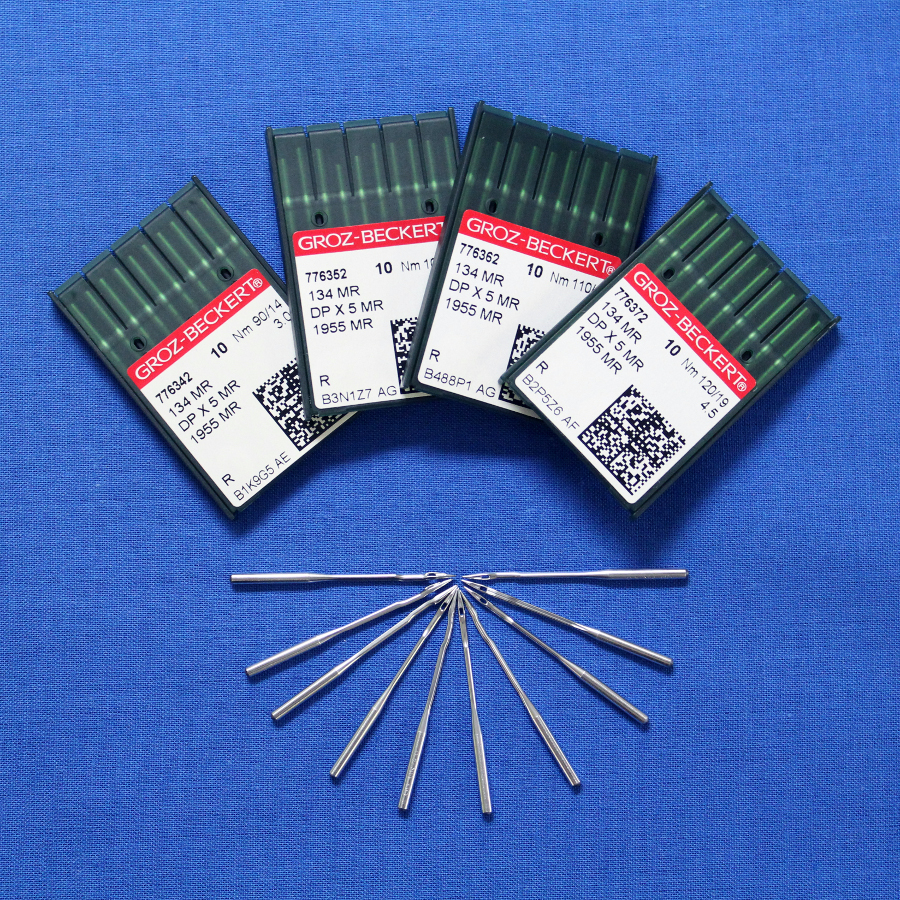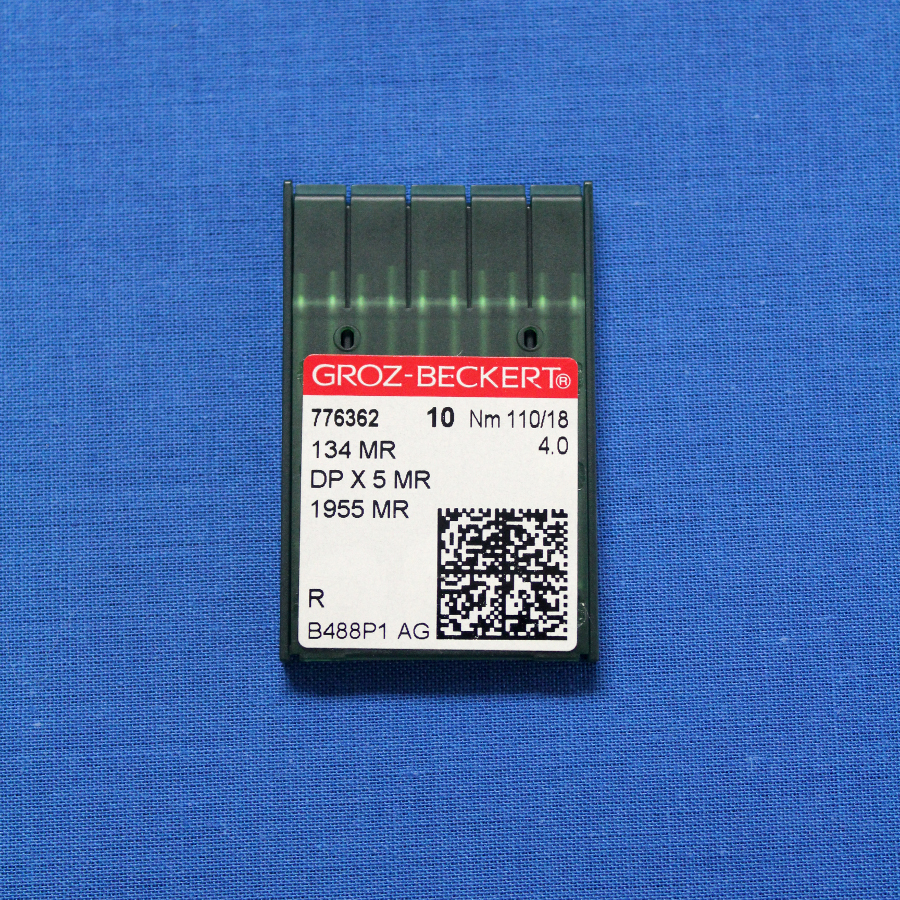A guide to needles for longarm quilting machines

There is an intricate dance going on every time your longarm quilting machine takes a stitch. At the heart of each stitch is the needle. This thin piece of sharpened wire has to duck down into the bobbin area at just the right depth. It has to make contact with the hook assembly at just the right time. And, it needs to be the right size for the thread. There is a lot going on!
An APQS longarm quilting machine is an industrial grade quilting machine firing upwards of 3,500 stitches per minute and it requires an industrial needle. It is critical that the needle you use in your machine is capable of sewing at high rates of speed in 360 degrees. We are asking a lot of that needle. It must bend and flex as it moves through the quilt layers all while piercing through multiple layers of fabric while making proper contact with the hook so you get phenomenal stitch quality every single time.
Did you know there are over 5,000 different kinds of needles? Who knew a little piece of wire could be so customized, right? It is important to select the right kind of needle designed to be used with your quilting machine.
The label on the needle pack will tell you everything you need to know but you might feel like you need a PhD to be able to read it. As longarm quilters we are most interested in the thickness of the needle (which is referred to as its size), the type of point on the tip of the needle and the exterior coating on the needle itself.
APQS machines use an MR needle which is designed for multi-directional sewing. You may also find on the needle package this type of needle is referred to as a SAN needle which stands for Special Application Needle. This type of needle has a specially formed eye and a deep groove to shepherd the thread as it travels to make each stitch.

Needle point style
The type of point on the needle used by a longarm is designated by either an R or FFG. An R on the packaging means it is designated as a sharp point. An FFG on the label means it is a light ball point needle. The sharp tip on the R needle penetrates the layers of fabric in a quilt more readily and is the best choice for an APQS machine. Some quilters ask about using the FFG tip when working with T-shirt quilts and other knit fabrics like microfiber. We prefer the R tip as it will pierce multiple layers of fabric well and will make the best contact with the hook.
Needle size
The general rule is to match the size needle to the size thread you are running. Remember that the smaller the number, the smaller the needle. The larger the number, the bigger the needle. The size of a needle is sometimes listed as two different numbers due to how different manufacturers label their needle packages. All APQS standup longarm machines are timed at the factory with a size 18/ 4.0 needle.
The most common utilitarian threads for longarm quilting are 40-weight and 50-weight threads. This weight of thread is perfect for the size 18/ 4.0 needle. For more info about thread weights don’t miss this article.
You might consider going down to a size 16/ 3.5 needle for finer threads like 60-weight and 100-weight threads. For fatter threads like robust cottons you may need to go up in size to a 19/4.5 needle.
In general, I try to use the smallest needle I can to make the smallest possible hole in order to achieve the best looking stitch. If your top thread starts shredding as you start your quilt project it is a good indicator that you need to go up in needle size because the eye of your needle is shaving off the outside of the thread as you quilt. Of course, if you’ve been quilting just fine and then all of sudden your top thread starts shredding it is a sign of a dull needle. Depending on the size of the quilt, the density of your designs and the types of fabrics used, you may need to change your needles more frequently. The best tip, though? Always start a new project with a fresh new needle!
Needle coating
Needles come with a chrome coating or a titanium tipped coating. The needles coated with titanium have a designation on the packaging of “Gebedur”. While the titanium needles stay sharper longer they also have a tendency to break higher on the shaft should you break a needle. That larger piece of metal can create burrs on the hook more readily which can cause thread break problems until that burr is found and buffed out. For this reason we recommend using the standard Chrome Groz-Beckert MR needles on your APQS longarm quilting machine.
Of course the best way to be sure you are buying to right needles for your APQS machine is to buy them from our online store or one of our retailers. Using a nice, new sharp needle for every project in your APQS machine is one of the best ways to prevent a host of irritating issues and will allow you to enjoy the quilting process.



